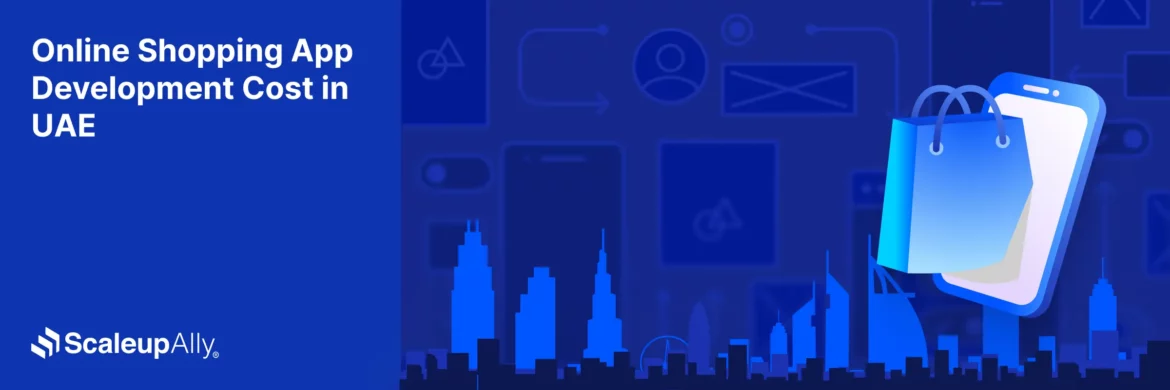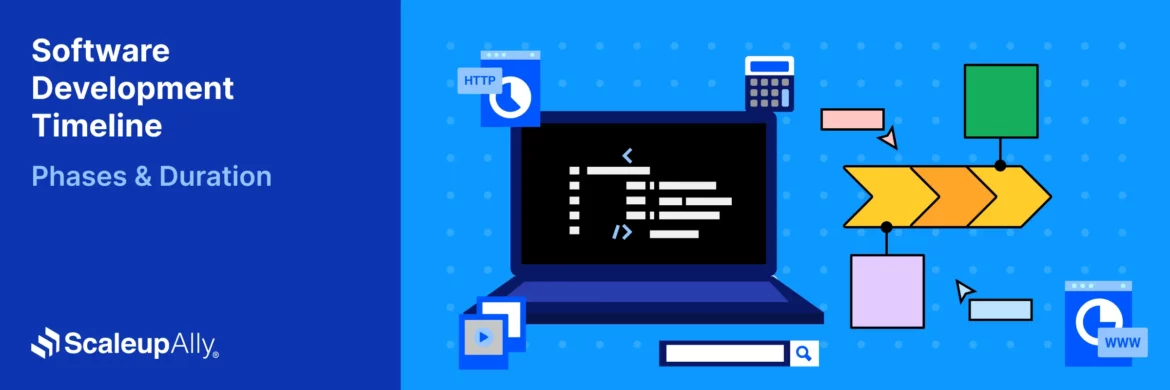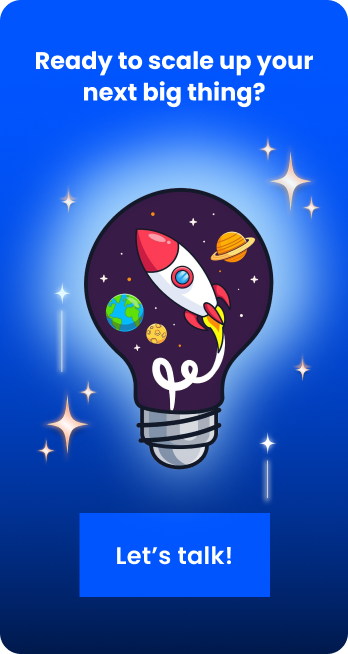
Real Estate App Development: Features, Types & Cost
Suprabhat Sen | January 31, 2024 , 12 min read
Table Of Content
The real estate market is full of fierce competition, where everyone is capable of seizing opportunities and making advancements. To survive and succeed in this crowded industry, you must stay ahead of your rivals.
A crucial first step is to establish an online presence by creating a website. According to a report by the National Association of Realtors (NAR), 95% of real estate agencies have websites featuring property listings. However, this alone may not be sufficient.
Developing real estate apps has emerged as a highly effective strategy for agencies to thrive. In the first quarter of 2021, over 23 million real estate apps were installed in the USA alone.
Real estate apps serve multiple purposes; they help agencies generate leads, manage listings, track expenses, facilitate closing deals, and conduct transactions.
In our exploration of “Real Estate App Development,” we aim to offer a comprehensive guide for real estate professionals seeking to leverage technology for their businesses.
Types of Real Estate Apps
The demand for innovative solutions has led to the emergence of various types of real estate apps, each catering to specific needs within the industry. Whether you’re a real estate professional, agent, broker, property developer, or startup founder, understanding these distinct types can empower you to choose the right platform for your goals.
1. Property Listing Apps
Objective: Targeted towards real estate agents and brokers, property listing apps serve as digital platforms to showcase available properties. These apps enable professionals to create detailed listings, including property specifications, high-quality images, and relevant details. Users, in turn, can easily browse through a diverse range of properties, streamlining the buying or renting process.
2. Real Estate Management Platforms
Objective: Ideal for property developers and management firms, real estate management platforms focus on optimizing day-to-day operations. These apps often integrate features such as property portfolio management, tenant communication tools, and financial tracking. The goal is to enhance efficiency in property management tasks, from rent collection to maintenance requests.
3. Mortgage Calculator Apps
Objective: Targeting both real estate professionals and potential buyers, mortgage calculator apps simplify the complex task of financial planning. Users can input property details, interest rates, and loan terms to calculate estimated mortgage payments. These apps empower buyers to make informed financial decisions and assist professionals in guiding clients through the financial aspects of real estate transactions.
4. Property Investment Apps
Objective: Geared towards property developers, investors, and those interested in real estate investment, property investment apps focus on analyzing market trends and identifying profitable opportunities. These apps often include features like property value estimations, market analysis tools, and investment calculators, enabling users to make strategic decisions based on data-driven insights.
Must-Have Features for a Real Estate App
In the competitive world of real estate, a mobile app’s success depends on how well it meets the various needs of users and provides a smooth, enjoyable experience.
Including the following essential features in your app can help you succeed.
1. User-Friendly Interface
Objective: To ensure a positive user experience, a clean and intuitive user interface is paramount. Users should be able to navigate the app effortlessly, with easy access to property listings, search functionalities, and additional features. An uncomplicated interface contributes significantly to user satisfaction and retention.
2. Advanced Property Search
Objective: Implementing a search feature allows users to filter and customize their property searches based on specific criteria. From location and price range to property type and amenities, advanced search functionalities empower users to narrow down options efficiently, saving time and enhancing their overall experience.
3. Virtual Property Tours: Immersive Exploration from Anywhere
Objective: Offering virtual property tours through technologies like augmented reality (AR) or 3D visualization enables users to explore properties remotely. This feature caters to the modern, tech-savvy audience, providing an immersive experience that goes beyond static images and floor plans.
4. Mortgage Calculator: Facilitating Financial Planning
Objective: Including a mortgage calculator feature aids both real estate professionals and potential buyers in financial planning. Users can input property details, interest rates, and loan terms to estimate mortgage payments. This feature empowers buyers to make informed decisions and assists professionals in guiding clients through the financial aspects of transactions.
5. Neighborhood Insights: Informed Decision-Making
Objective: Providing valuable information about specific neighborhoods, including school ratings, crime statistics, amenities, and local trends, enables users to make informed decisions about property investments. Real estate professionals can leverage this feature to assist clients in finding the right neighborhood that aligns with their preferences.
How to Create a Real Estate App (Step by Step)
We’ve looked at what features to incorporate in your real estate apps and the types of real estate apps in the market.
Now, let’s discuss the steps involved in creating a successful real estate app.
Step 1: Define Your Objectives and Target Audience
Clearly articulate the goals of your real estate app and identify your target audience. Determine whether you’re focusing on property listings, virtual tours, property management, or a combination of these features. Understanding your objectives will guide the entire development process.
Step 2: Conduct Market Research
Research the current real estate app market to identify gaps, trends, and potential opportunities. Analyze competitor apps, user reviews, and emerging technologies to inform your app’s unique value proposition.
Step 3: Choose Your App Type
Based on your objectives and market research, decide on the type of real estate app you want to create. Options include property listing apps, real estate management platforms, virtual tour applications, or a combination of features tailored to specific needs.
Step 4: Define Key Features and Functionalities
List the essential features your app must have. This may include a user-friendly interface, advanced property search, high-quality visuals, virtual property tours, real-time updates, and any other functionalities aligned with your app’s goals.
Step 5: Plan the User Experience (UX) and User Interface (UI)
Design a seamless and intuitive user experience. Create wireframes and mockups to visualize the app’s layout and navigation. Prioritize a user-friendly interface that ensures easy access to features and a positive overall experience.
Step 6: Choose the Right Technology Stack
Select the appropriate technology stack for your real estate app. Consider factors such as the app’s complexity, platform (iOS, Android, or both), and any specific frameworks or tools that align with your development goals.
Step 7: Develop a Minimum Viable Product (MVP)
Build a Minimum Viable Product (MVP) that includes core features. This allows you to test your app’s functionality, gather user feedback, and make necessary improvements before investing in the full-scale development.
Step 8: Integrate Real-Time Updates and Notifications
Implement a system for real-time updates on property listings, price changes, and market trends. Incorporate push notifications to keep users informed and engaged, fostering a sense of urgency and enhancing the overall user experience.
Step 9: Ensure Security Measures
Prioritize user data security. Implement secure user authentication measures, encryption protocols, and other security features to build trust between users and your app.
Step 10: Test Rigorously
Conduct thorough testing to identify and rectify any bugs or issues. Test the app’s functionality, usability, and performance across different devices and platforms to ensure a seamless experience for all users.
Step 11: Launch and Market Your App
Once testing is complete, launch your real estate app on the chosen platforms. Develop a robust marketing strategy to promote your app, utilizing online channels, social media, and partnerships with real estate professionals to maximize visibility.
Step 12: Gather User Feedback and Iterate
Encourage users to provide feedback on their experiences with your app. Use this feedback to make continuous improvements, addressing any issues and enhancing features based on user preferences.
Also Read: How Long Does It Take To Build Real Estate Website?
How Much Does it Cost to Build a Real Estate App?
When considering the cost of building a real estate app, various factors come into play. Here’s a concise breakdown to help you budget effectively:
- Scope and Features: Basic features may start at $10,000, while advanced functionalities like virtual tours can raise costs to $50,000 or more.
- Platform Choice: Developing for iOS or Android can cost $20,000–$30,000 each. Opting for both platforms may double the expenses.
- Design and UX/UI: Investing in a user-friendly interface and design elements may range from $5,000 to $15,000.
- Virtual Tours and AR: Integrating advanced features like virtual tours or AR experiences may add $20,000–$50,000 to the budget.
- Testing and QA: Allocating resources for testing and quality assurance could range from $10,000 to $20,000.
Tips for building a successful real estate app
As we explore real estate technology further, it’s clear that there’s a strong need for new and innovative solutions.
Creating a successful real estate app isn’t just about coding and design—it is about delivering a smooth experience to the users.
In this section, we’ll look at some tips and best practices you should keep in mind while building a real estate app.
1. Define a Clear Value Proposition
Tip: Clearly articulate the unique value your app brings to users. Whether it’s innovative features, a streamlined user experience, or a niche focus, a clear value proposition sets your app apart in the crowded real estate landscape.
2. Prioritize User-Friendly Design
Tip: Invest in a clean and intuitive user interface (UI) that prioritizes user experience (UX). Ensure easy navigation, quick access to essential features, and a visually appealing design to keep users engaged and satisfied.
3. Implement Advanced Search Functionality
Tip: Enhance user experience by incorporating advanced search features. Allow users to customize property searches based on specific criteria such as location, price range, property type, and amenities, facilitating efficient property discovery.
4. Incorporate Virtual Tours and AR Experiences
Tip: Embrace technology by offering virtual property tours and augmented reality (AR) experiences. Providing immersive features sets your app apart, offering users a more interactive and engaging property exploration.
Unique Ideas for Building Your First Real Estate App
This section explores unique and creative ideas that can make your real estate app different from others, offering users a unique experience in their property search and management.
1. Collaborative Property Viewing
Introduce a feature that enables users to schedule and participate in collaborative virtual property viewings. This innovative approach fosters real-time engagement, allowing multiple users to explore properties together, share insights, and make informed decisions.
2. Smart Investment Analytics
Incorporate advanced analytics tools to provide users with smart investment insights. Utilize machine learning algorithms to analyze market trends, predict property value fluctuations, and offer personalized investment recommendations based on individual user profiles.
3. Eco-Friendly Property Index
Introduce an eco-friendly property index that rates properties based on sustainability and environmental impact. Provide users with information on energy efficiency, eco-friendly features, and green certifications to align with the growing demand for sustainable living.
4. Personalized Home Matchmaking
Utilize artificial intelligence to create a personalized home matchmaking feature. Analyze user preferences, lifestyle, and habits to match them with properties that align with their unique needs and preferences, offering a more tailored and efficient property search.
5. Real-Time Community Chat
Foster community engagement by incorporating a real-time chat feature. Users within the same neighborhood or with similar property interests can connect, share information, and discuss local events, creating a vibrant and interactive community within the app.
Conclusion
As we finish our look at “Real Estate App Development: Features, Types & Cost,” it’s clear that creating a successful app involves many steps. By focusing on features that users want, understanding the different types of real estate apps, and carefully estimating app development costs you can set yourselves up for success in the competitive real estate market.
Here’s to the exciting possibilities of real estate app development!
Frequently Asked Questions
Q: Are there specific considerations for integrating third-party APIs in real estate apps, and how does it impact overall development costs?
Integrating third-party APIs can enhance the functionality of real estate apps, providing features like mapping, financial calculators, or augmented reality. However, it comes with considerations such as API costs, maintenance, and potential dependencies. The impact on overall development costs depends on the complexity and number of APIs integrated.
Q: How can real estate apps stay relevant in the market, considering evolving user expectations and technological advancements?
Regular updates and iterations are essential to address evolving user expectations and technological advancements. Staying abreast of market trends, collecting user feedback, and incorporating innovative features through continuous development ensures the long-term relevance and competitiveness of real estate apps.
Q: What are the key factors to consider when choosing between native and hybrid app development for real estate?
The choice between native and hybrid app development depends on factors like budget, target audience, and desired functionality. Native apps offer optimal performance but may involve higher costs. Hybrid apps provide cross-platform compatibility at a potentially lower cost but may have some performance trade-offs.
Related Blogs

Top 20 Emerging Technologies of 2026
Discover the top 20 emerging technologies of 2026. Explore which innovations are driving change across healthcare, finance, manufacturing, and other crucial industries.
ScaleupAlly Team
Dec 16 ,
9 min read

Online Shopping App Development Cost in UAE | Pricing & Factors Explained
Understand UAE online shopping app development costs in 2025 with pricing ranges, influencing factors, hidden fees, timeframes, and expert savings tips.
Suprabhat Sen
Nov 29 ,
13 min read

Software Development Timeline: Phases, Duration & Estimation Guide
Understand the software development timeline with phase durations, key factors, hidden delays, and practical methods to estimate project time.
Suprabhat Sen
Nov 29 ,
16 min read



